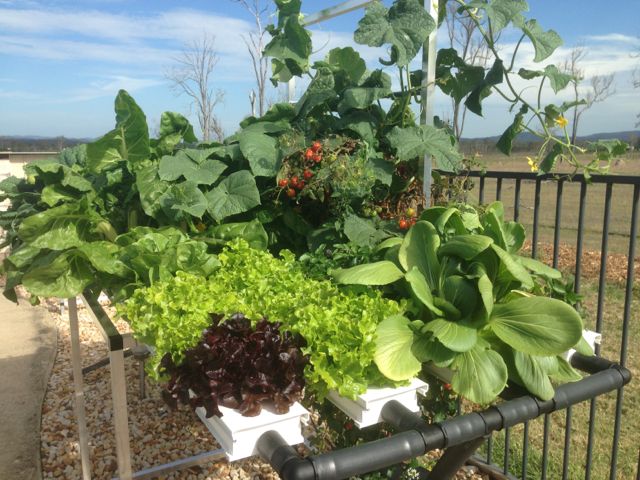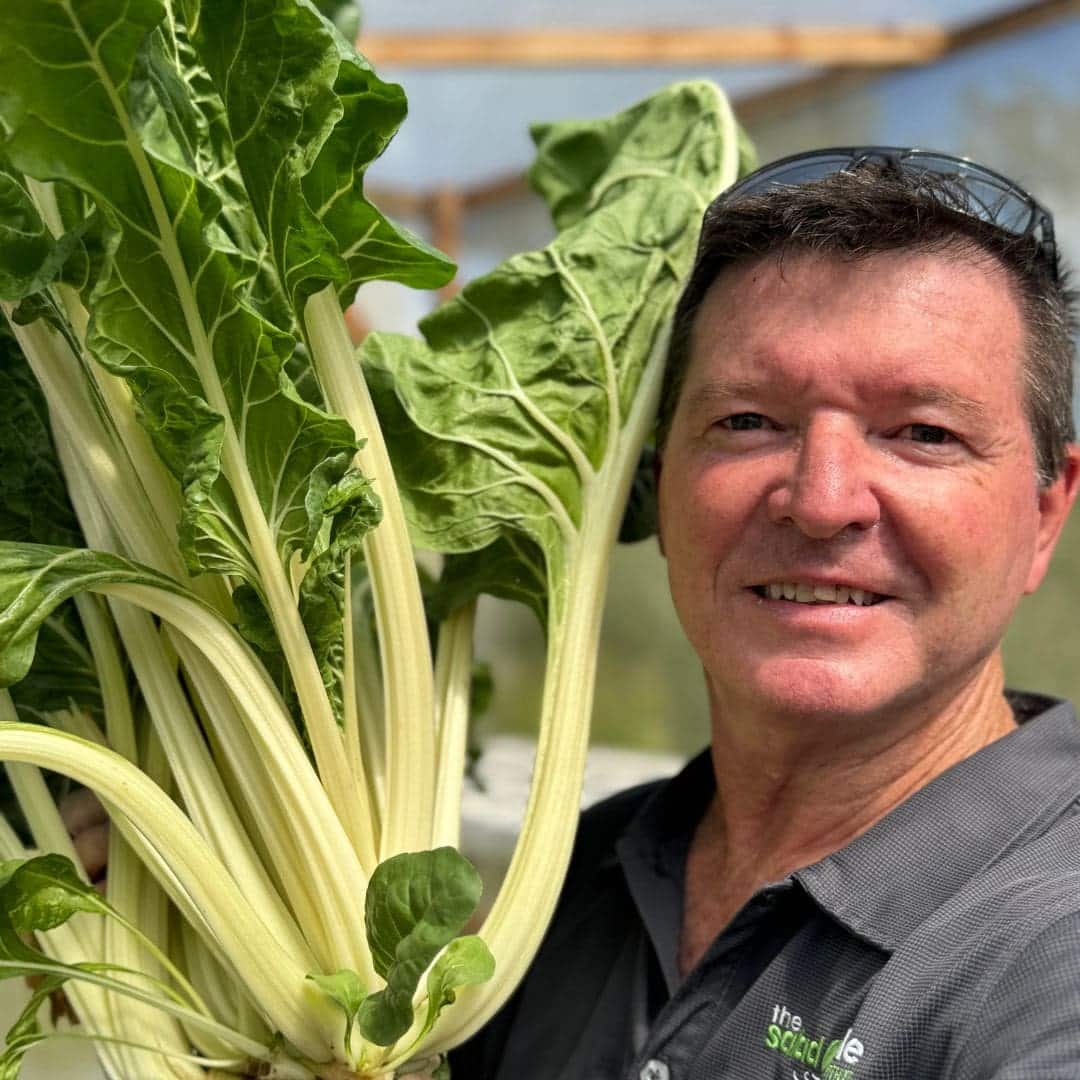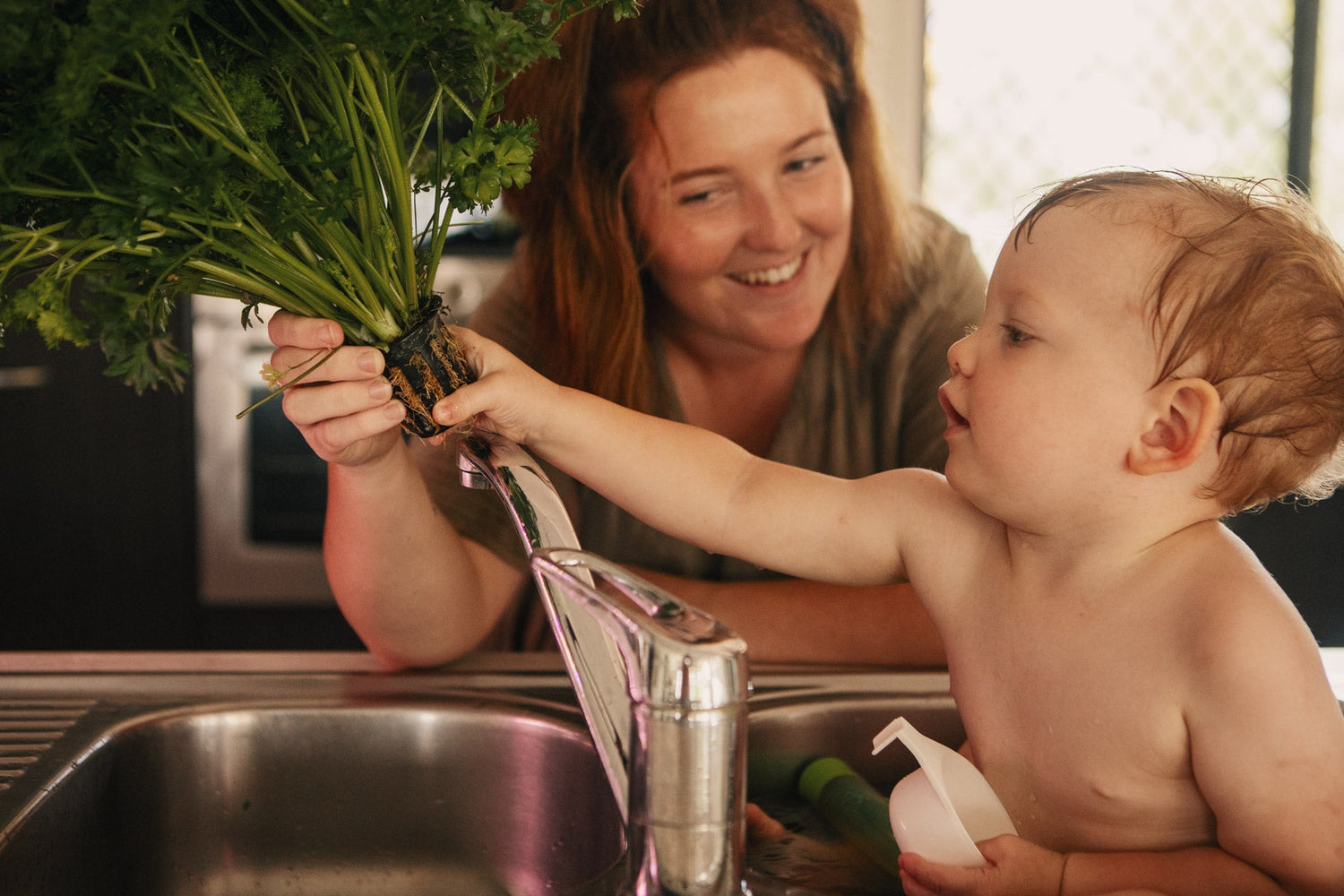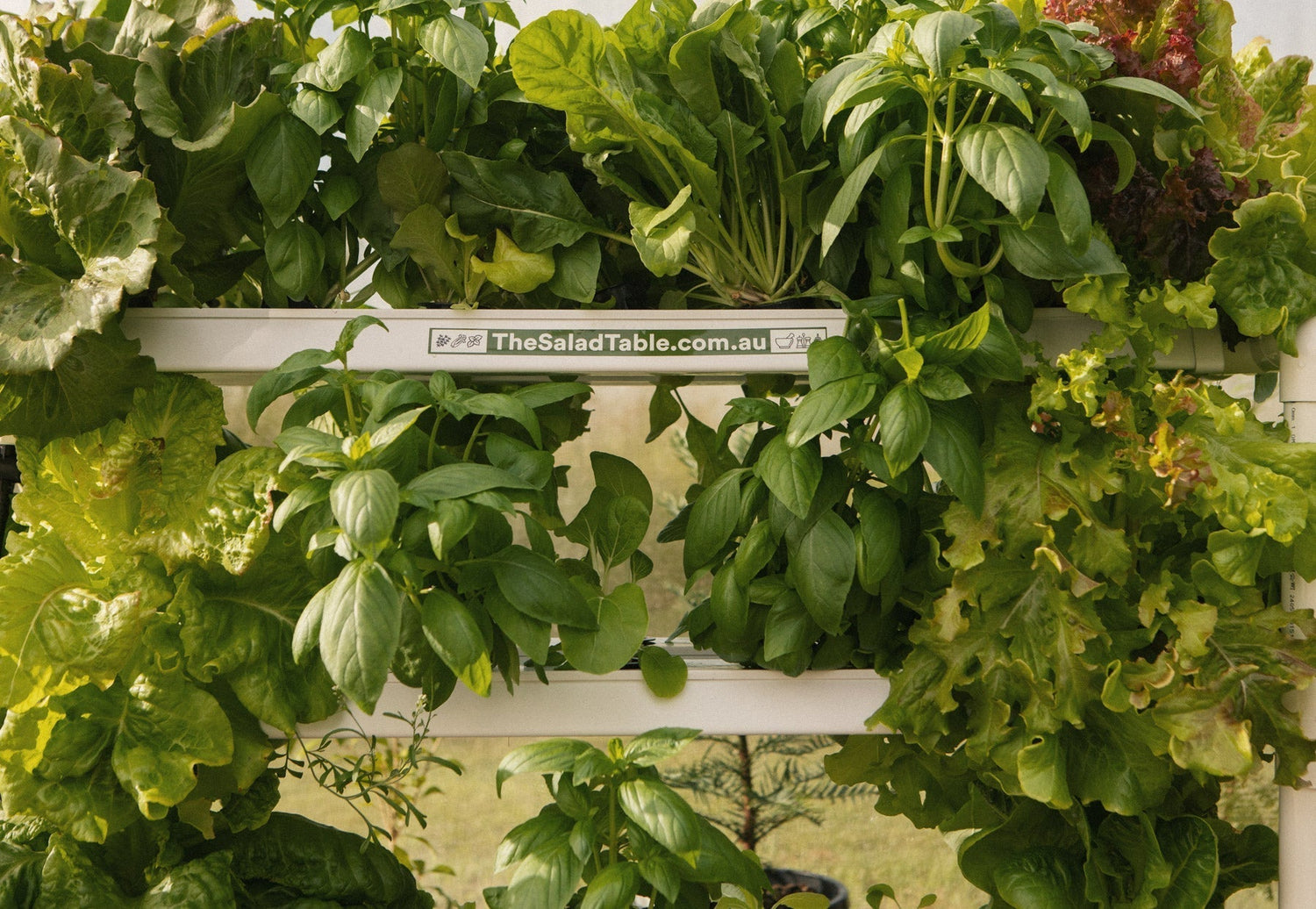There is nothing better than sitting down to a hot meal on a winter's evening, and to top it off, you know the ingredients came from your own garden. The flavour, the freshness and the fact that you know exactly where it came from adds to the moment.
Many varieties of herbs and veggies can be picked at over and over simply by cutting off what you need for each meal and leaving the plant in your garden to continue growing, giving you absolute freshness every day of the week. Imagine how much you will save on your grocery bills AND actually get good quality farm fresh produce.
Instead of seeding only one seed, (if you like growing your own seedlings) try adding 2 or 3 seeds when starting your seedlings for larger types of plants. This works great for Pak/Bok Choi and in fact I always use 4 seeds and pick out the weakest plant leaving the strongest 3. This then gives me 3 fresh separate choi plants to pick at different times all from one growing hole. This process can be used for many varieties and as I always say, experiment and create...
Another benefit of growing from seed is creating your own combination of plants. For example, add a red and a green lettuce seed together in the same hole on your Salad Table. i have been growing lettuce like this for many years and call it the "combo". It adds a burst of colour and a sweeter flavour to your salad...
I have complied a list of my favourite 6 winter varieties -
1. Wombok Cabbage, also known as Chinese Cabbage,

I have placed this as no. 1 on my list for one reason, Wombok Salad. If you haven't tried it, try it NOW. The plant forms a tight head and grows rather large over about 5 weeks (from seedling stage). If you grow them side by side it may be necessary to space every second hole apart as they mature and surprisingly, the roots don't grow very large so it's easy to move around The Salad Table when required. It is best suited to cooler conditions in the south but will still perform quite well in the warmer winter conditions around the tropics. Keep an eye out for bugs as they will attack from the inside and before you know it your cabbage will be gone. Harvest when the plants feels solid and heavy.
2. Cos Lettuce, also known as Romaine
This is the main and vital ingredient in Caesar Salad and is the perfect salad all year round. For a winter version just throw in some warm chicken. Here is one of many recipes for this favourite dish. Most varieties of Cos Lettuce grow year round and are one of the most simple fast growing lettuce varieties on the planet. They are also more tolerant to pests which enables you to grow them without any bug sprays, particularly in winter. After placing your seedling into your garden your Cos should be ready to harvest at around 4 weeks. Enjoy this crunchy loose head legend.
3. Dill,

If you love a nutritious fish dish on a cool winters night, dill is the herb that compliments it best. Try this recipe, fish parcels with lemon and dill. This fresh herb adds a delicious accent to eggs, cheese, vegetables and grows well all year round. Dill prefers a good sunny position during winter is not very frost tolerant. Cut as needed and watch new shoots take the place of old. If left to grow Dill can get to about 1 metre tall before shooting to seed. Dill seeds were traditionally used to soothe the stomach after meals, so place some seeds in a small dish and pop it on the dinner table for all to enjoy.
4. Bok Choy or Pak Choi,
You really need to spend some time this winter over a wok creating your favourite Stir Fry and there is no substitute like Pak Choy or Bok Choi as the base. Although bok choy is fairly resistant to most plant diseases keep an eye out for pesky caterpillars as they love them as much as we do. To minimise spraying just pick them off. (look under leaves as this is their favourite place to hide) Full sun is preferred but not necessary. Seed 4 seeds and pick out the weakest one prior to placing your seedling in The Salad Table. 3 choi plants grow perfectly in 1 hole. Harvesting younger plants will add more flavour to your dish...mmm
5. Parsley,

My personal favourite parsley variety is flat leaf, commonly known as Plainleaf or Italian Parsley. Curly is another type that grows well in your Salad Table but is primarily used as a garnish. Plainleaf on the other hand has many uses. Click here for 10 recipes that use parsley. Parsley is a good source of flavonoid and antioxidants, especially luteolin, apigenin,[16] folic acid, vitamin K, vitamin C, and vitamin A. When growing from seed use a pinch (approx 10 seeds) to ensure a big bunch. Break or cut off as needed or take out whole and freeze the excess. You can even place your plant, roots and all in a glass of your Salad Table nutrient on the bench top for immediate access. It will continue to grow providing you with a continuous fresh supply. Parsley is sure to take any awesome dish to the next level.
6. Kale, last but definitely not least
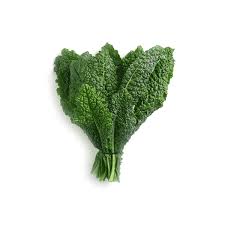
There are many varieties of Kale and my personal favourite is black tuscan. It is very versatile and can be used in a number ways including raw in any salad, cut in strips, splashed with extra virgin olive oil and baked to create the healthiest chips on the planet. You can also throw it in the juicer for one of the most nutrient packed drinks available. Kale is packed with calcium, vitamin A, vitamin C and vitamin K, along with tons of phytonutrients and minerals whilst containing very few calories. Many say it is one of the most nutritious vegetables available and may even have extraordinary health benefits that may reduce the risk of certain types of cancer. Kale will certainly improve your health no matter which way you decide to consume it. 2 or 3 seeds placed in each Salad Table Grow Cube will ensure a good sized bunch that won't cost $5+ (supermarket price at time of writing) but only 40c...
If you thought growing in winter was not an option for you, you thought wrong. It is amazing how simple it is to have many winter meal ingredients within a few metres from your kitchen.
These are just 6 of my many favourite varieties that i grow on my Salad Tables and on my farm as well. Enjoy, experiment, eat healthy and be healthy.
What are your favourite herbs and veggies to grow in winter?


